Tips for Recognizing Secure Websites
In the globally linked digital world, where online transactions and interactions are increasingly common, ensuring and prioritizing web safety and security is critical. With cyber threats sneaking around every digital corner, safeguarding our sensitive information is essential. Whether you are shopping online, banking, gaming, or just browsing the web, distinguishing between secure and fake websites is vital for safeguarding sensitive information and maintaining online safety.
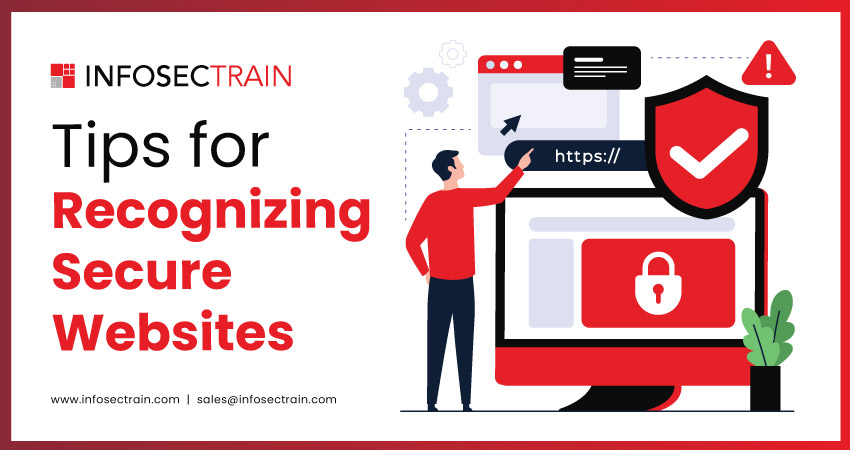
Cybercriminals continuously adapt their tactics and techniques as technologies and digital activities evolve. From sophisticated phishing scams to malicious malware, the threats to our online security are always present and constantly changing. In this landscape, recognizing secure websites has become a crucial skill for every internet user.
But what exactly makes a secure website? How can you know the difference between legitimate websites and fraudulent ones? In this comprehensive blog, we will discuss essential tips and techniques to help you identify secure websites.
Essential Tips for Recognizing Secure Websites
Here are some vital tips for online safety when browsing:
1. Check for HTTPS
Secure websites use HTTPS (Hypertext Transfer Protocol Secure) to encrypt data transmitted between your browser and the website’s server, ensuring privacy and security.
Best Practice:
- Always verify that the website URL starts with “https://” instead of “http://”. The ‘s’ stands for secure.
- Avoid entering sensitive information on websites without HTTPS.
Example:
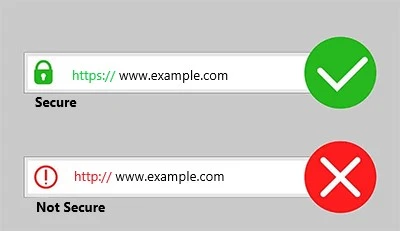
- Secure connection: https://example.com
- Insecure connection: http://example.com
2. Check for Padlock/Tune Icon
Web browsers feature a padlock icon next to the website URL, indicating a secure connection.
Best Practice: Before providing sensitive data or login credentials, ensure the presence of the padlock icon in the URL bar.
Example:
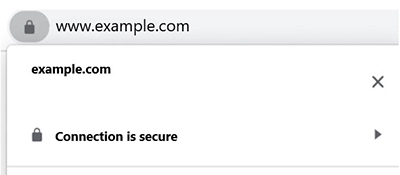
As the broader shift towards HTTPS continues, Google Chrome has replaced the traditional padlock icon with the tune icon.
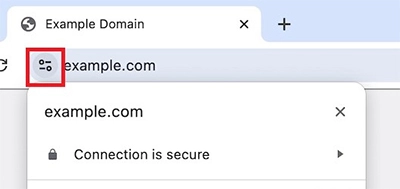
3. Verify SSL/TLS Certificate
SSL/TLS certificates are digital certificates used for authenticating website identities and enabling secure connections. This ensures that the certificate is issued by a trusted Certificate Authority (CA) and matches the website domain.
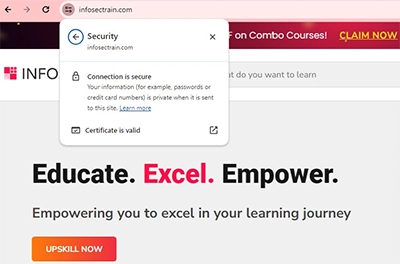
Best Practice: Click on the padlock icon to view the website’s SSL/TLS certificate details, ensuring they are issued by a trusted CA.
Example:
- Trusted certificate issuer: Let’s Encrypt
- Untrusted certificate: Self-signed or issued by an unknown CA
4. URL Inspection
Phishing websites often use URLs similar to legitimate ones to trick users into disclosing sensitive information.
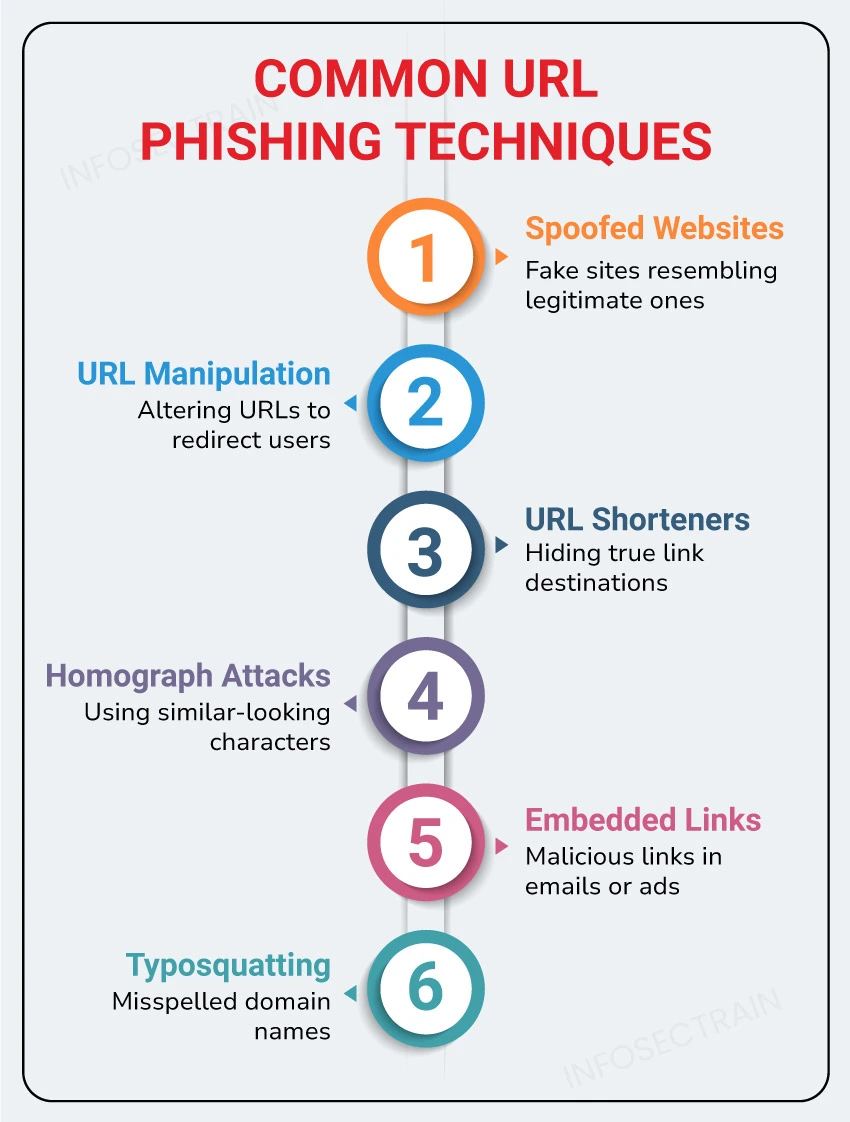
Best Practice:
- Check the URL for misspellings, unusual characters, or extra subdomains compared to the legitimate website.
- Pay close attention to domain names that mimic legitimate sites but with slight alterations, like hyphens or extra characters.
- Exercise caution with uncommon or suspicious domain extensions.
Example:
- Legitimate URL: amazon.com
- Phishing URL: amaz0n.com
5. Look for Trust Seals and Logos
Legitimate websites often display trust seals and logos from reputable security organizations or industry certifications (e.g., Norton Secured, McAfee Secure, Better Business Bureau (BBB) Accredited).
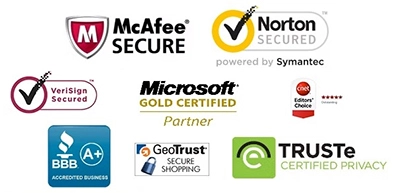
Best Practice:
- Click on website trust seals and logos to verify their authenticity and ensure they link to valid certification pages.
- Cross-reference contact information with official sources to confirm legitimacy.
Example:
- Verify Seal: Confirm Norton Secured seal for security assurance
- Verify Logo: Check for BBB Accredited logo for ethical business practices
6. Check Contact Information and About Us Page
Legitimate websites provide clear contact information and an About Us page to establish trustworthiness.
Best Practice:
- Verify the accuracy of contact details.
- Review the About Us page to understand the website’s purpose and credibility.
Example:
- Contact Information: Physical address, email address, or phone number
- About Us Page: Information about the company’s history, mission, and values
7. Check Website Design and Content
Pay attention to the website’s design and content quality, as legitimate sites often invest in professional design and maintain updated content.
Best Practices: Be cautious of poorly designed websites with spelling or grammatical errors, low-resolution images, or suspiciously generic content.
Examples:
- Professional design: Clean layout, high-quality images
- Suspicious design: Cluttered layout, excessive pop-ups
8. Watch for Red Flag
Be cautious of common warning signs of phishing or fraudulent activities, such as unsolicited emails urging you to click on links or enter personal information and suspicious requests for sensitive data.
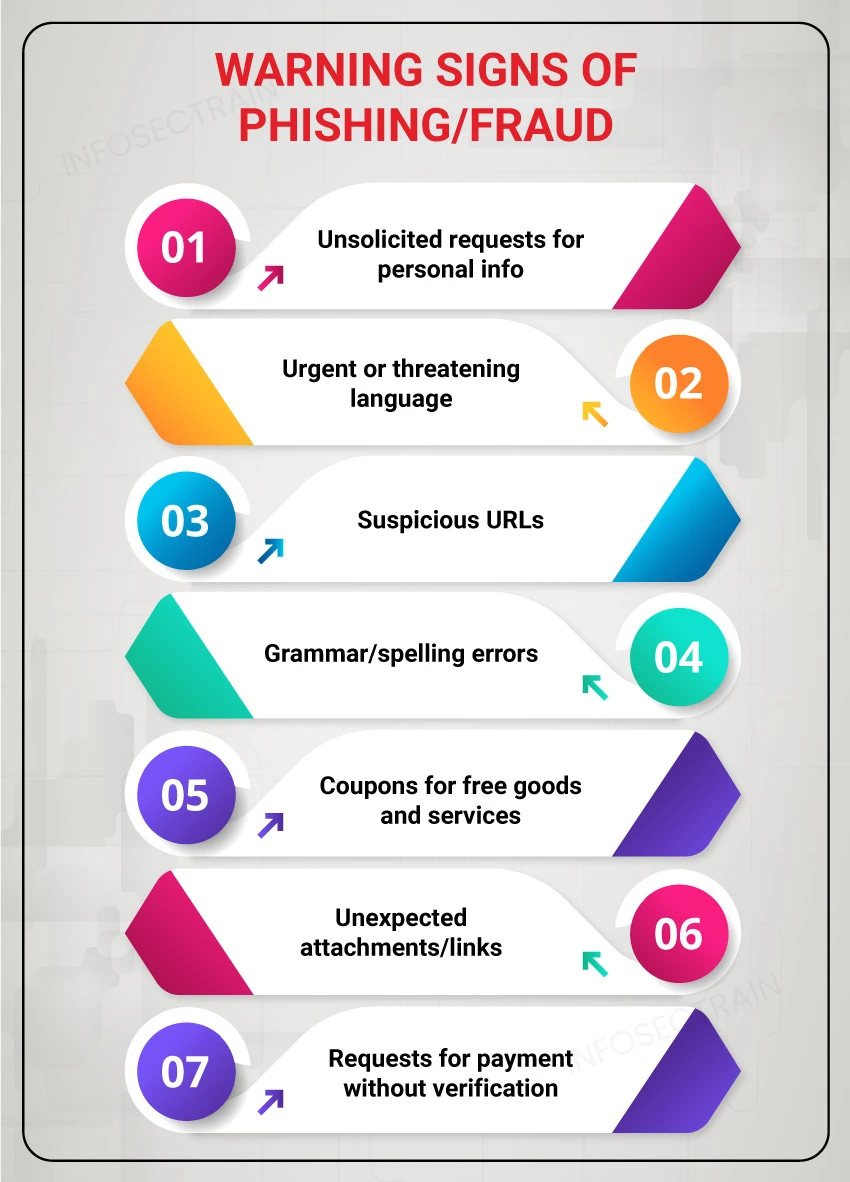
Best Practices: If an offer seems too good to be true or you receive unexpected emails asking for sensitive data, verify the website’s legitimacy before taking any action.
Example: Unsolicited email claiming you have won a lottery but requiring your bank details to claim it
9. Excessive Number of Pop-ups
Too many pop-ups can indicate a less trustworthy website, as reputable sites typically have minimal intrusive advertising.
Best Practices:
- Install a pop-up blocker for your system and cellphone.
- Avoid interacting with pop-ups to minimize potential risks of malware or deceptive offers.
Example: A website bombarding you with pop-ups claiming you have won prizes
10. Check for Website Reviews
If you’re exploring an unfamiliar website and are unsure about its security or reliability for making purchases or anything, reading reviews can provide valuable insights.
Best Practices: Check reviews from multiple platforms like Trustpilot or Google Reviews to protect the reputation and reliability of the website. Pay attention to:
- Fraud allegations
- Reports of unsafe practices
- Consistent negative feedback
Example: Finding multiple reviews stating the website didn’t deliver products as advertised
Feel free to explore other blogs related to cybersecurity
- Career Path For Cybersecurity
- Reasons to Explore a Career in Cybersecurity
- Top Tools Covered in Cybersecurity Expert Training Course
- Introduction to Cybersecurity Framework
- Defensive Cybersecurity Approach for Organizations
- Becoming a Cybersecurity Professional without a Tech Degree
Whether you are a cybersecurity expert or simply an internet user, understanding fundamental cybersecurity principles is crucial for making informed choices and safeguarding your online well-being.
Cybersecurity Training with InfosecTrain
If you want to make a career in cybersecurity or go to an advanced level, you can enroll in InfosecTrain’s Cybersecurity certification and training courses. We also offer comprehensive training courses in other domains like Data Privacy, Cloud Security, Auditing, GRC, and more. Our expert instructors deliver top-notch training to equip you with the skills needed for success in these fields.







 1800-843-7890 (India)
1800-843-7890 (India)